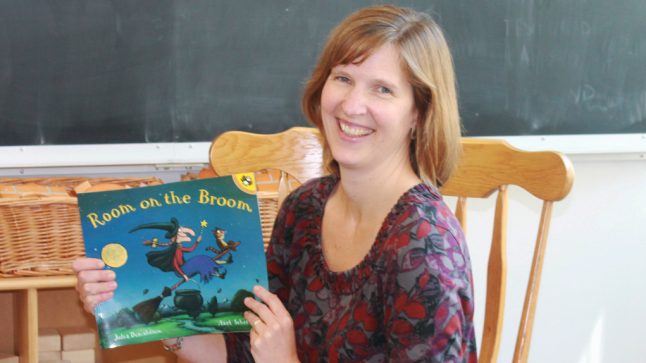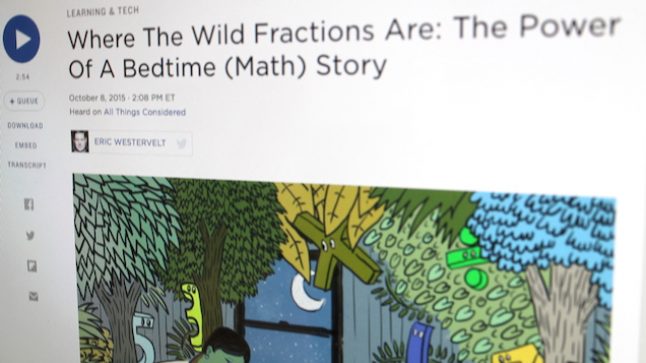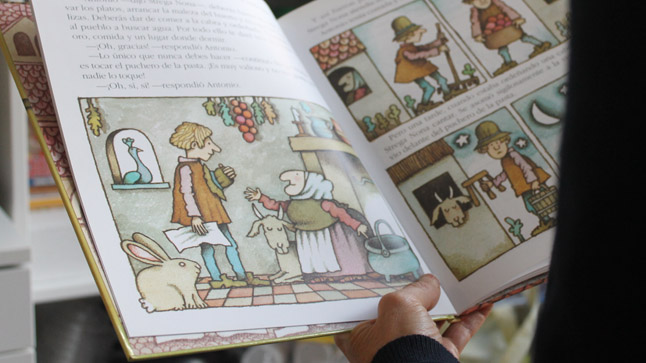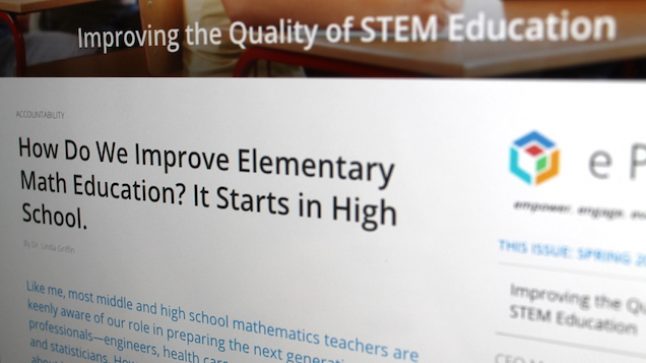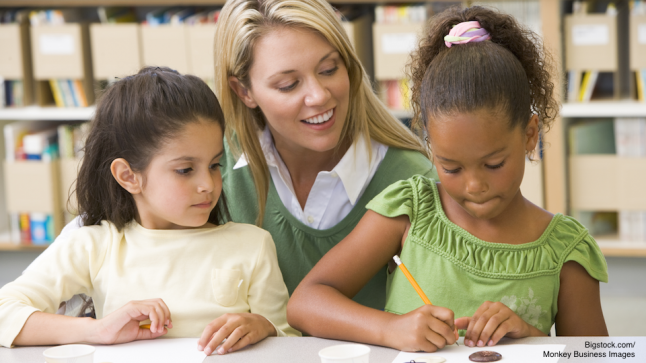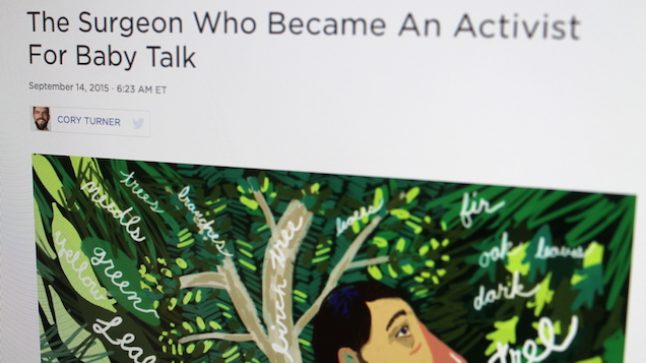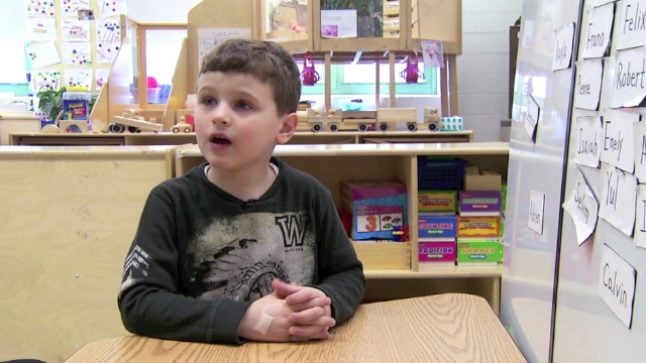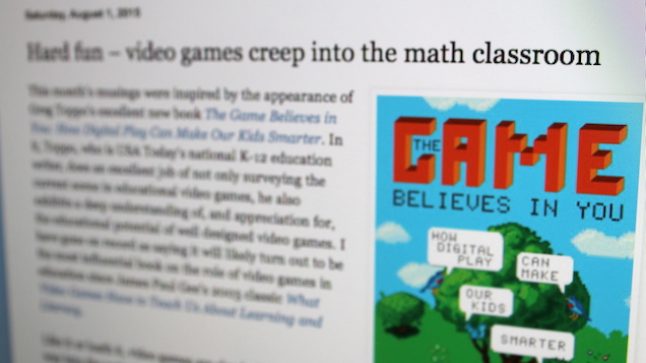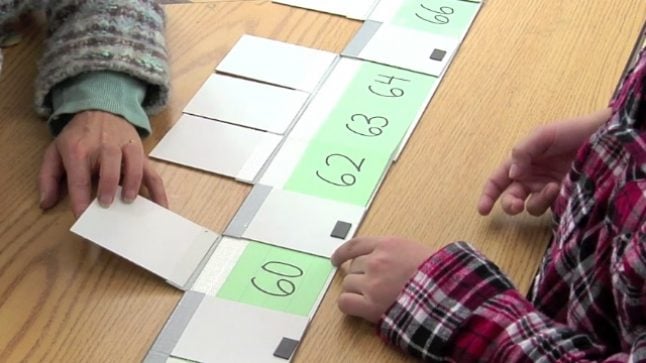Series: Book Ideas
Make Room for Halloween Math
October 13, 2015
Have some Halloween fun with the witch’s tale Room on the Broom. In this lively story by Julia Donaldson and Axel Scheffler, a witch makes room for her animal friends to ride on her broomstick… until there’s one too many animals, and the broom snaps in two. The central question of this book – Is there room on the broom for me? – is a mathematical one.
- Topic: Number Sense, Number Operations
- Age/Grade Level: 1st Grade, 2nd Grade, 3rd Grade
- Tags Animals, Seasonal, Place Value, Holiday, Books, Room on the Broom, Julia Donaldson, Axel Scheffler
Series: Hear from the Experts October 12, 2015
Math App with Daily Problems Benefits Children and Parents
Research from the University of Chicago published in Science journal suggests that the math app Bedtime Math can help bolster math confidence for both children and parents. Bedtime Math takes the routine of a nightly…
- Age/Grade Level: Infants, Toddlers, Pre-K, Kindergarten, 1st Grade, 2nd Grade, 3rd Grade
- Tags Technology, Math Anxiety
Series: Book Ideas October 6, 2015
3 Magic Cauldron Books for Kids to Mathematize the Season
One of the most classic images of the Halloween season is a witch's magic pot or cauldron. Singing about witches' brew and reading tales of magical pots can also be a great way to introduce…
- Topic: Number Sense, Measurement
- Age/Grade Level: Pre-K, Kindergarten, 1st Grade, 2nd Grade, 3rd Grade
- Tags Seasonal, Food, Holiday, Books, Capacity, Two of Everything, Lily Toy Hong, The Magic Porridge Pot, Paul Galdone, Strega Nona, Tomie dePaola
Series: About Early Math September 25, 2015
Secondary Math Influences Future Elementary School Teachers
Dr. Linda Griffin, a former secondary math teacher who now works as a pre-service teacher educator, discusses some of her observations about the United States' consistently lukewarm feelings towards math. She argues that secondary math…
- Tags Math Anxiety
Series: About the Collaborative September 23, 2015
Centering on Math: NSF Grant Funds Program with Pre-K Head Start Centers
The Collaborative received a four-year $3 million grant from the National Science Foundation, funding a new project that aims to improve early mathematics learning in Head Start classrooms across Chicago. This new program intends to…
Series: Hear from the Experts September 16, 2015
Talking with Children Sets the Groundwork for Mathematical Learning
A new book, Thirty Million Words: Building a Child's Brain, explains the importance of regularly talking with children ages 0-3—the time during which the brain develops most rapidly. Ensuring that these conversations take place will…
Series: Focus on the Child September 4, 2015
Daily Attendance Chart with Child 27
A student explains how his classroom's attendance chart is used.
- Topic: Data Analysis
- Age/Grade Level: Pre-K, Kindergarten
- Tags Child 27, Attendance
Series: About Early Math August 24, 2015
High Score: Using Math Video Games in the Classroom
Mathematician Keith Devlin reflects on the use of video games in the classroom in his review of Greg Toppo's The Game Believes in You: How Digital Play Can Make Our Kids Smarter.
- Age/Grade Level: Pre-K, Kindergarten, 1st Grade, 2nd Grade, 3rd Grade
- Tags Technology
Series: About Early Math August 13, 2015
Children’s Math Anxiety May Stem from Parents
A new study from the University of Chicago suggests that parents can easily transfer their math anxiety to their children.
- Age/Grade Level: 1st Grade, 2nd Grade, 3rd Grade
- Tags Math Anxiety, Technology
Series: Focus on the Child August 13, 2015
Using Number Paths with Child 7
A student counts backwards and forwards on a number line with hidden digits.
- Topic: Counting
- Age/Grade Level: Pre-K, Kindergarten
- Tags English Language Learner, Child 7
Do the math.
Free videos.
Free newsletter packed with ideas.
Free professional learning modules.
